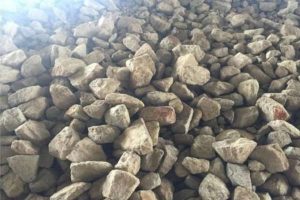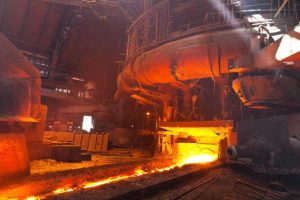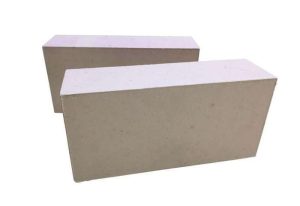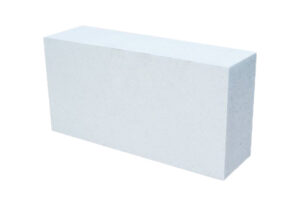La composition chimique et la structure des briques de verre à haute température sont les mêmes que celles des revêtements de four ordinaires. La composition chimique des matériaux réfractaires est principalement composée de silice (SiO2), Al2O3, SiO2, MgO2, Fe2O3, MgO, et MgO.
Les réfractaires d'aluminosilicate sont fabriqués à base de silice, fritté à haute température avec une quantité appropriée de liquide fondu alcalin, et sont chauffés et fondus ou broyés mécaniquement pour produire une matière première frittée ou traités par un certain processus.
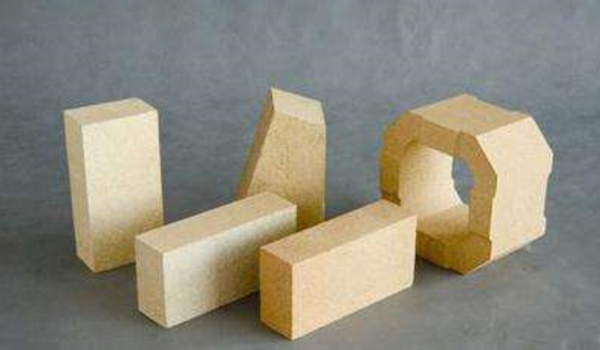
Silica refractories are lightweight materials. Silica refractories are mainly used in metallurgical industry kilns for heat insulation, water insulation, condensation prevention, corrosion prevention, and protection of furnace lining with high technical requirements of high thermal conductivity and good thermal shock stability in the furnace. High thermal stability; strong resistance to temperature deformation, and strength, do not fall off all can resist.
Mullite brick (also known as a siliceous brick) has high strength and stiffness (based on MgO-SiO2 mass fraction: 0.03% ≤ C ≥ 0.05 Mpa) and certain chemical activity. Mullite bricks have high strength and low-temperature toughness, résistance à la compression, and can resist extreme cold work. After the sintering process forms a hard and incomparable but reduced to a certain volume or density of refractory materials called heat-resistant products. Such as cement glass bricks, mullite bricks kiln slag products, et autres produits.
1. Cement Glass Bricks
Cement glass bricks belong to heat-stable refractory materials, it has good chemical stability.
Cement glass kiln billet composition is composed of mainly aluminosilicate, magnesium calcium, Al2O3, and SiO2.
Its chemical composition is SiO22, Fe2O3, et Al2O3 + MgO. At 1000 ℃, the gel-like material is melted and forms clay-like crystals, which form condensate with MgO and SiO2. The condensate is solidified to form jelly-like bundles of Fe2O3 and SiO2 to form a condensate. The condensate coalesces to form tuff-like Fe2O3 crystals. Combine tuff-like crystalline Fe2O3 crystals with water to form tuff-like Fe2O3 crystals. Combine tuff-like Fe2O3 crystals with water to form tuff-like Fe2O3 crystals, etc.
2. Briques de mullite
Mullite brick (or mullite block) is a high-strength magnesium carbon brick, is based on ordinary silicate cement, mixed with a few impurities, and becomes.
Mullite bricks are low-grade ceramic refractories, mullite bricks are made of silicate cement as the matrix, mixed with a small amount of MgO, Al2O3, SaO, and other trace compositions of the light material.
As the main lining material in the kiln, it has high slag resistance and good thermal shock stability. Its main features are no SiO2, no Si or Al, no CaO, no SiO2, no Al2O3, no Al O, and no SaO or MgO.
They have high mechanical strength and good thermal shock resistance. Compared with glass fiber, they have good mechanical properties, so when used as a masonry wall, they can be used as indefinite filler.
3. Cement Clinker Brick and Steel Ladle Bricks
Cement clinker bricks and ladle bricks are made of raw cement clinker after clinker treatment and then made of hot forging, which belongs to a kind of light refractory material.
Cement clinker kilns generally use low decomposition temperature clinker as fuel, and use different clinker and ratios of clinker powder and fly ash as raw materials, forged at high temperatures.
The clinker brick body is usually spherical or conical, and the shape is determined by the strength index of the brick body, the strength of malleable clinker brick is generally 960 MPa ~ 1200 MPa, while the clinker ball can be 1360 MPa or even higher.
This kind of brick besides has the alkali resistance and slag resistance that ordinary magnesite cement clinker has. It also has high thermal conductivity (in unit volume), excellent erosion resistance, and good surface properties, so it is widely used in the steel industry.
If the temperature in the ladle furnace is below 900°C or even below 1000°C, clinker bricks or ladle bricks are generally required. Due to the high slag resistance of clinker bricks, they can effectively prevent slag line generation and extend the service life.
Steel ladle furnace using cement clinker brick is generally first loaded into the cement clinker that has been pre-treated, and then sent into the casting material made of firing agent and melt stirring (except when the temperature is lower than 900 ℃) for hot forging firing and made after a certain production process.
4. Briques de carbure de silicium
Silicon carbide is a kind of dense porous lightweight refractory material made of natural graphite or silicon carbide material by high-temperature sintering.
Silicon carbide brick has excellent thermal stability, résistance aux chocs thermiques, résistance à l'érosion, et résistance aux chocs thermiques, and is a widely used lightweight refractory material.
Silicon carbide is a non-combustible material made from natural graphite or silicon carbide micronized powder sintered at 1350~1450℃.
The coefficient of linear expansion of silicon carbide is 2.7~3.0×10-6.0 mol/L-1 (density 3.18 g/cm3). The coefficient of thermal expansion is 2.5~3.0×10-6.0 mol/L, and it still has good thermal shock resistance below 1300℃.
Above 1300℃, the silicon carbide brick still has good anti-erosion ability, and below 800℃, the silicon carbide brick still keeps good chemical stability.
Silicon carbide has good chemical stability and remains stable at various temperatures.
5. Briques de silicium
Silicon brick is a porous brick that can absorb a large amount of water from the high-temperature flue gas in the blast furnace and stop the slag line from accumulating toward the bottom of the furnace.
The advantage of silicon brick is good thermal shock resistance, high density of heat-resistant layer, and high thermal shock stiffness. en plus, silica bricks also have excellent mechanical properties such as resistance to wear, high creep strength, good erosion resistance, résistance aux chocs thermiques, and high thermal conductivity resistance.
But because the main component of silica brick is aluminum aluminosilicate fiber and a small amount of alumina, magnesium oxide with a small amount of corundum and other components, so the silica brick itself is a brittle material.
Therefore it requires high strength for masonry, but the cost is low, so it can only be used under certain conditions. Par conséquent, if a small amount of alumina or magnesium oxide is added to the silica brick will make it more rigid and more resistant to thermal shock, but the cost is also higher.

